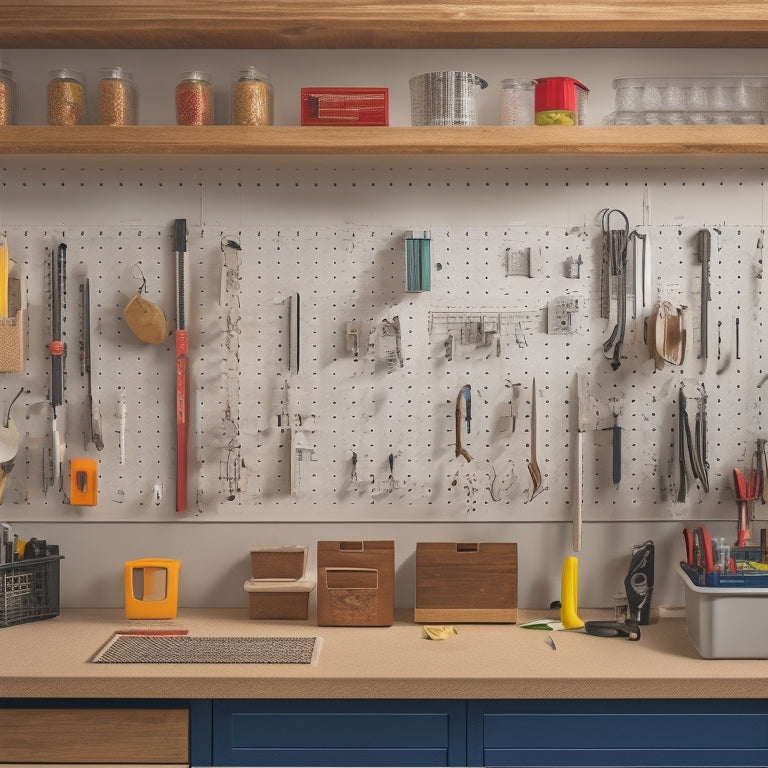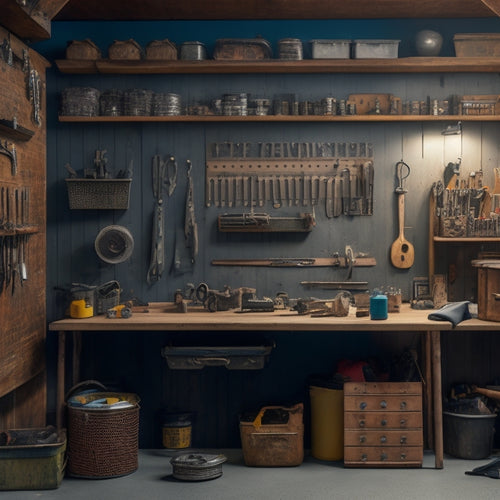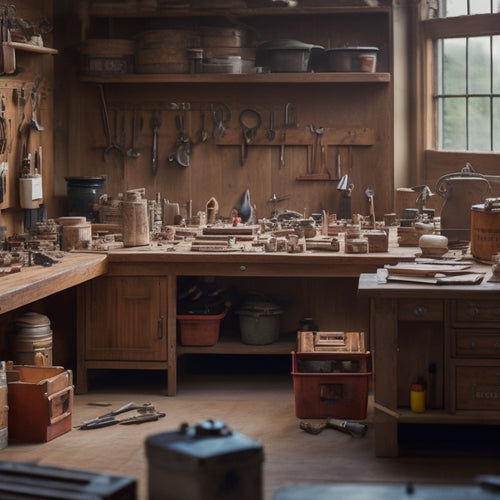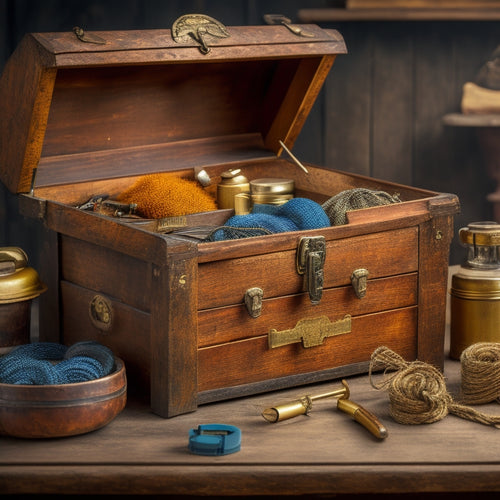
3 Best Decluttering Strategies for Key and Tool Enthusiasts
Share
You're tired of wasting time searching for the right key or tool amidst the clutter. It's time to get organized! Start by sorting your items into daily, weekly, and occasional use categories, prioritizing frequent use items for easy access. Next, categorize your tools by function or type, creating logical groupings for quick identification. Finally, designate a home station for each tool family, returning tools to their spot after use. By implementing these strategies, you'll save time and reduce frustration. Now, take your organization to the next level by fine-tuning these systems to fit your unique needs.
Key Takeaways
• Sort keys and tools into daily, weekly, and occasional use categories to prioritize frequently used items for easy access.
• Categorize keys and tools by function or type to create logical Tool Families and group similar items together.
• Assign dedicated spots for each tool family to maintain a clutter-free workspace and enable quick tool identification.
• Use personalized labels and color-coded zones to distinguish categories and create a visually appealing system.
• Establish a habit of returning tools to their designated stations after use to prevent clutter buildup.
Organize by Frequency of Use
Sort your keys and tools into three categories: daily, weekly, and occasional use, so you can easily access the ones you need most often. This simple step will help you prioritize and declutter your collection.
Next, assign personalized labels to each category, making it easy to identify which tools belong where. Consider color-coded zones to further distinguish between each group. For instance, use red labels for daily use, blue for weekly, and green for occasional. This visual system will save you time and frustration when searching for a specific tool.
In the daily use category, store your most frequently used keys and tools in an easily accessible location, such as a designated hook or tray near your workspace. Weekly use items can be stored in a nearby cabinet or on a shelf, while occasional use items can be stored in a less accessible area, like a storage bin or on a high shelf.
Categorize by Tool Type
Categorize your keys and tools by their function or type, such as wrenches, pliers, screwdrivers, or sockets, to create a logical and coherent system that makes sense to you. This approach helps you visualize your Tool Families, grouping similar items together.
For instance, all your screwdrivers can be categorized under one family, and within that family, you can have Task Segments like flathead, Phillips, or Torx. This system allows you to quickly identify what you need and where it's located.
As you categorize, consider the tasks you regularly perform. Do you often work with electronics? Create a category for your electronics-specific tools. Are you a DIY enthusiast? Set up a category for your carpentry tools.
Designate a Home Station
Assign a dedicated spot for each tool family, where they can be easily accessed and returned after use, allowing you to maintain a clutter-free workspace. This designated home station will save you time and energy in the long run.
Start by identifying the tools you use most frequently and group them together. For example, you can create a station for your keys, another for your hand tools, and one for your power tools.
To make your stations visually appealing and functional, consider Station Aesthetics. Use a consistent color scheme, and add some decorative elements like labels or signs to create a cohesive look. Station Signage is also vital, as it helps you quickly identify what's stored in each station. You can use labels, stickers, or even chalkboard signs to achieve this.
Frequently Asked Questions
How Do I Declutter Sentimental Items, Like Grandfather's Old Hammer?
You're struggling to part with grandfather's old hammer due to emotional attachment. Create a Memory Keeper box, taking photos of the item, and write down the story behind it, allowing you to keep the memory, not the clutter.
Can I Repurpose Old Toolboxes for Storage or Should I Replace Them?
"You stumble upon Grandpa's old toolbox, and suddenly, you're flooded with memories. Why not give it a Rustic Revamp? Upcycle it into a storage masterpiece, preserving the past while decluttering your present – a Toolbox Upcycle that's both functional and sentimental."
What's the Best Way to Store Small Parts, Like Screws and Nuts?
You'll love using micro storage containers with magnetic strips to store small parts like screws and nuts. They'll keep everything organized, visible, and within easy reach, saving you time and frustration.
How Often Should I Clean and Maintain My Organized Tools?
You'll want to schedule regular cleanings and tool audits to maintain your organized tools. Set a reminder for every 3-6 months to dust, inspect, and tidy up your tools, ensuring they remain functional and within easy reach.
Are There Any Specific Decluttering Strategies for Left-Handed People?
You might wonder if left-handed ergonomics play a role in decluttering; surprisingly, it does! Adapt handedness habits by swapping tool placements, adjusting workspaces, and using ambidextrous designs to optimize your workflow and storage.
Related Posts
-

Design Considerations for a Custom Pegboard
When designing a custom pegboard, you'll want to start by evaluating your storage needs, considering factors like too...
-

Top 7 Parts Tray Organizers for Productivity
You can optimize your workspace and enhance productivity with the right parts tray organizer, which can help you cate...
-

What Are the Advantages of a Wooden Tool Box
You choose a wooden tool box, you're not only getting a reliable storage solution, but also a long list of benefits t...


